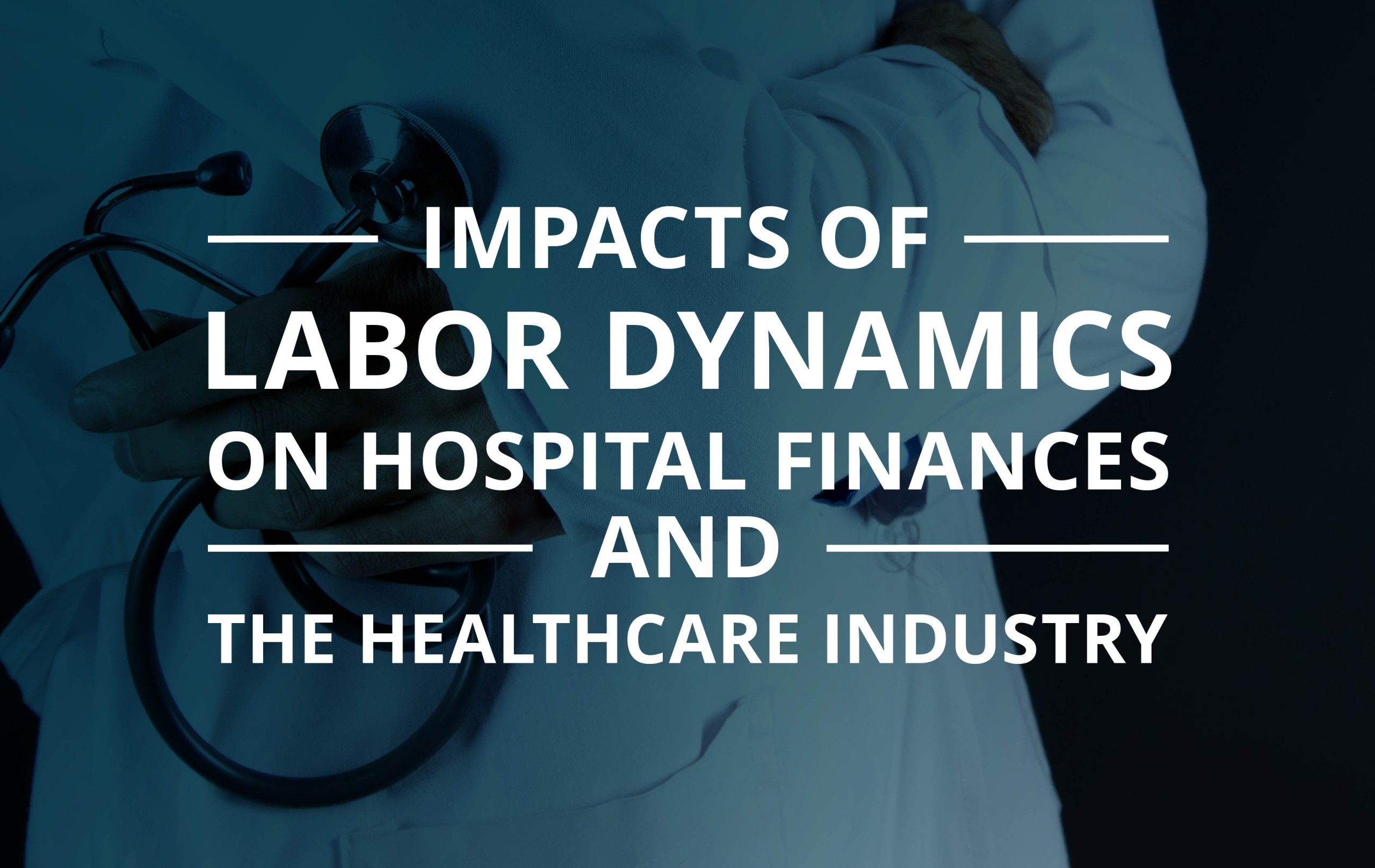Labor—salaries and wages for physicians, nurses, and other healthcare professionals—has historically represented a significant portion of hospitals’ operating expenses. For HCA Healthcare, one of the largest healthcare systems in the US, the ratio of salaries and benefits expenses to revenues consistently approximated 46% from 2019-2021. By comparison, supplies as a percent of revenues approximated 16% over that time period, while other operating expenses ranged from 17-18.5% of revenues.
Clearly, labor represents an outsized portion of hospitals’ overall operating expenses. As such, the past two years of disruption in the labor market, particularly among healthcare professionals, has been reflected in hospitals’ financial conditions. In a report they published in October 2021, Premier concluded that hospitals and health systems in the US are paying $24 billion more per year for qualified clinical labor than before the COVID-19 pandemic began. Further, their analysis indicates that clinical labor costs are up by an average of 8% per patient per day, compared to 2019 (pre-COVID) baseline levels.
As the healthcare system continues to experience an influx of patients being treated for COVID-19, hospitals have found themselves competing for qualified labor, particularly nurses. In addition to the added cost for finding and recruiting nurses (often through agencies), hospitals have relied on existing staff to work overtime hours to care for the increased patient load. These dynamics bore out in Premier’s data as well; according to their report, overtime hours were up 52% (as of September of 2021) when compared to a pre-COVID baseline. Within the same comparison framework, use of agency and temporary labor increased 132% for full-time and 131% for part-time workers. Additionally, the use of contingency labor rose nearly 126%.
In addition to the increase in working hours, the rates for these positions are materially higher than standard arrangements – that is, overtime and agency staff typically add 50% or more to a standard hourly rate. Anecdotal commentary from public hospital companies has cited even higher multiples, further highlighting the extent to which labor dynamics impact overall finances for health systems.
In the early days of the pandemic, the federal government acted swiftly to provide support to health systems nationwide. The CARES Act and subsequent measures aided in shoring up hospital finances to mitigate the disruptive impacts of the pandemic. Now two years into the pandemic, US hospitals have experienced ebbing and flowing waves of COVID patients, while nurses and other healthcare professionals have remained dedicated to providing the necessary care. Through these experiences, hospital systems have learned to manage their operations to treat COVID and non-COVID patients simultaneously. By comparison, in the earlier days of the pandemic and in subsequent surges, hospitals often forewent (either by choice or mandate) ‘elective’ or ‘non-essential’ procedures to preserve capacity in their systems. Much of the conversation during those periods focused on preserving hospital beds. It soon became apparent that the capacity of care provided by nurses and other professionals was just as essential, if not more so, to maintain.
Today, nationwide COVID cases and hospitalizations are lower than they were during the Omicron peak earlier in 2022. However, hospitals across the country continue to admit and care for COVID patients every day, while nurses and other professionals are leaving the profession, due to burnout or other reasons. In October 2021, data from Morning Consult found that 18% of healthcare workers had quit their jobs during the COVID-19 pandemic. Among healthcare workers who kept their jobs during the pandemic, 31% considered leaving. Additionally, the report notes that 79% of healthcare professionals said the national worker shortage has affected them and their place of work.
As we cross the two-year anniversary of COVID-19’s declaration as a pandemic, the US healthcare workforce has experienced a broad disruption, upending operations of hospitals and health systems across the country. Hospitals have in turn developed and executed strategies to operate in this environment, including examining ways to reduce other costs to offset the impact of increased expenses for labor. As the COVID-19 pandemic continues and hospitals continue to experience wage inflation pressures, suppliers, medical technology and device companies, and staffing agencies are seeing the downstream effects across the industry.
Gilmartin diligently monitors and analyzes trends across the healthcare sector and macro environment, in order to better inform our clients of developments that may impact their companies directly or indirectly. Contact our team today to learn how our combined knowledge and experience can benefit you.
Alex Khan, Vice President


Leave a Reply